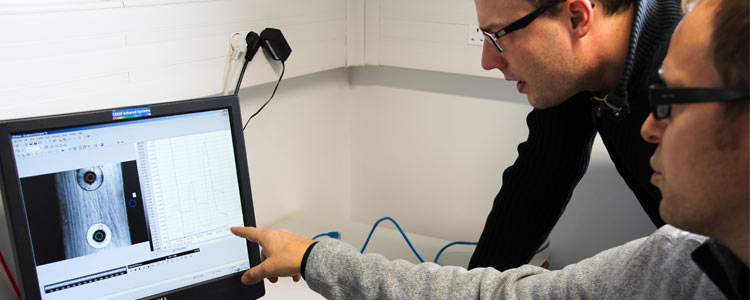The SYMME laboratory's Intelligent Materials, Structures and Instrumentation axis covers research activities ranging from the synthesis and structural, thermodynamic and physical characterization of multifunctional materials and nanomaterials, to the instrumentation and control of complex mechatronic systems, via the implementation of active materials and/or electro-mechanically coupled structures for applications such as ambient vibratory and thermal energy recovery. At the same time, new acquisition systems and analysis of human activities in the process of controlling energy devices are gradually being introduced.
What these activities have in common is the development and use of "functional" materials with multi-physical properties, "intelligent" structures (from devices to the acquisition and processing of interaction data), and energy and medical applications.
Issues
The issues addressed in this line of research are as follows.
Quantify and determine the thermodynamic properties of metal alloys and oxides, particularly at very high temperatures
Measure thermodynamic quantities and establish phase equilibrium diagrams to control manufacturing processes and optimize properties for use, for example in nuclear safety and electroerosion.
Developing non-centrosymmetric nanomaterials and quantifying their non-linear optical properties
Develop multifunctional nanomaterials based on LiNbO3, for example, with strict control of their size and morphology, and quantify their physicochemical and particularly non-linear optical properties for applications in multimodal imaging (optical and MRI) for early diagnosis and theranostics through targeted, photo-triggered release of therapeutic agents to specifically-marked malignant cells.
Design and optimize micro-energy recovery, transmission and conversion systems
Recover, convert and store ambient mechanical energy over a wide frequency band (0-200Hz), using innovative devices (piezoelectric, electromagnetic or electrostatic) to power sensors or small electronic systems (a few mW).
Develop electrodynamic power transmission systems to power sensors without wires, through metal walls or inside the human body.
Optimizing thermomechanical conversion for ambient thermal energy recovery
Convert thermal energy (150°C) into electrical energy using Stirling micro-machines (displacement 1 mm³). Produce these micro-machines using collective manufacturing processes to reduce unit costs, and assemble them in clusters to produce a few kW/m².
